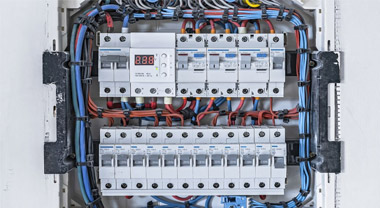how to change a circuit breaker at home?
Is a tripped circuit breaker giving you a headache? Do you want to learn how to change it at home but don't know where to start? You've landed in the right place! This comprehensive guide will walk you through the steps to safely replace a circuit breaker in your electrical panel. Whether you're a seasoned DIY enthusiast or a novice homeowner, this easy-to-follow guide is sure to light up your knowledge about circuit breakers.
Table of Contents
- Understanding Circuit Breakers
- When Should You Change a Circuit Breaker?
- Tools Required for Changing a Circuit Breaker
- Safety Precautions
- Step-by-Step Guide to Changing a Circuit Breaker
- When to Seek Professional Help?
- Summary
Understanding Circuit Breakers
A circuit breaker is a safety device in your home's electrical system that prevents overloads and short circuits. By interrupting the flow of current when excess electricity is detected, it safeguards your home from potential electrical fires. Learning about its operation can help you understand when a replacement is needed.
When Should You Change a Circuit Breaker?
Identifying the right time to change a circuit breaker is crucial. Regular tripping, burning smell from the breaker box, physical damage, and aged breakers (over 15-20 years old) are some of the common signs indicating a replacement is due.
Tools Required for Changing a Circuit Breaker
- Screwdriver
- Wire stripper/cutter
- Voltage tester
- Insulated pliers
- Replacement circuit breaker
- Flashlight (optional)
Safety Precautions
Changing a circuit breaker involves working with electricity, so it's essential to take safety precautions. Always turn off the main power supply before starting, wear rubber-soled shoes, and ensure your hands are dry. Never touch the metal parts of the breaker directly.
Step-by-Step Guide to Changing a Circuit Breaker
Step 1: Turn Off the Main Power
Before starting, shut off the main power supply to avoid the risk of electrical shock. You'll find the main breaker switch in your circuit box.
Step 2: Remove the Panel Cover
Using a screwdriver, unscrew and carefully remove the circuit panel cover to reveal the breakers.
Step 3: Identify the Faulty Breaker
The breaker needing replacement will usually be in the "off" position or in between "on" and "off." A burning smell or a charred look indicates a faulty breaker.
Step 4: Remove the Faulty Breaker
Disconnect the circuit wire from the breaker by loosening the terminal screw using a screwdriver. Then, carefully snap the breaker out of its slot.
Step 5: Install the New Breaker
Install the new breaker by snapping it into place where the old one was. Make sure it's secure.
Step 6: Reconnect the Circuit Wire
Strip about half an inch of insulation off the circuit wire using a wire stripper/cutter, if necessary. Then, reconnect it to the new breaker by tightening the terminal screw.
Step 7: Test the New Breaker
Turn the new breaker to the "on" position. Restore the main power supply and check if the new breaker is working properly. If it stays in the "on" position, your job is successful.
Step 8: Reattach the Panel Cover
Finally, carefully replace the panel cover and secure it with the screws you removed earlier.
When to Seek Professional Help?
While changing a circuit breaker is a straightforward task, there are circumstances when you should consider seeking professional help. If the breaker continues to trip after replacement, you notice an unusual smell or see sparks, or if you simply feel uncomfortable doing the task yourself, hire a licensed electrician.
Summary
Changing a circuit breaker is a handy skill that can save you both time and money. This guide provides a step-by-step process to safely change a circuit breaker, from understanding when it's time for a change, to the tools required, safety precautions, and actual steps of the replacement process. However, remember that working with electricity can be dangerous. Always prioritize safety and don't hesitate to call in professionals when necessary.




